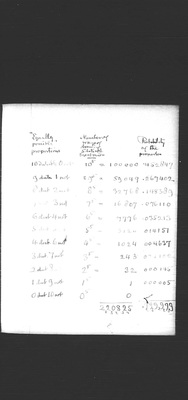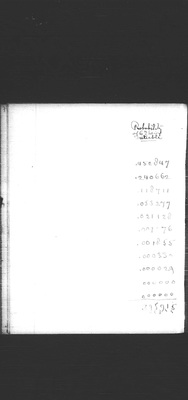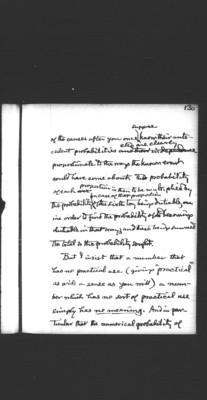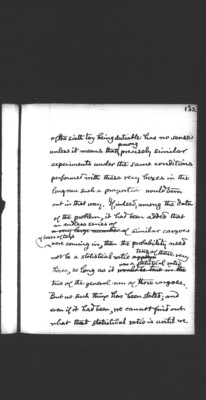Pages
66
126
equally frequent in the long run, the only sense that it can usefully bear, is a monstrously unwarrantable assumption. These eleven proportions, then, being equally possible, he calculates in how many different equally probable ways the first five toys would be dutiable in each of these ways. This is shown in the table.
After that first error, the rest of the calculation is unexceptionable except for certain simplifications which I make, in order to avoid the integral calculus. All the ways in which the observed event could have been brought about are reckoned up, and the probabilities
69
130
of the causes after you once suppose know their antecedent probabilities etc. are clearly proportionate to the ways the known event could have come about. The probability of each proportion is then to be multiplied by the probability in case of that proportion of the sixth toy being dutiable, in order to find the probability of its becoming dutiable in that way; and these being summed the total is the probability sought.
But I insist that a number that has no practical use (giving “practical” as wide a sense as you will) a number which has no sort of practical use simply has no meaning. And in particular that the numerical probability of
70
132
of the sixth toy being dutiable has no sense unless it means that among precisely similar experiments under the same conditions performed with these very boxes in the long run such a proportion would turn out in that way. If, indeed, among the data of the problem, it had been added that an endless series of similar cargoes of boxes of toys were coming in, then the probability need not be a statistical ratio true of these very boxes, so long as it was a statistical ratio true of the general run of those cargoes. But no such thing has been stated; and even if it had been, we cannot find out what that statistical ratio is until we




